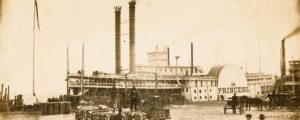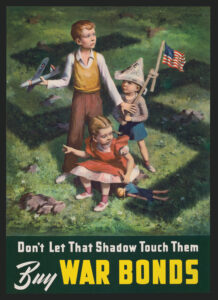Reviewed by Katherine Bailey
By Lynda Mugglestone
Yale University Press, New Haven, 221 pages
In Lost for Words, her third book on English-language subjects, Lynda Mugglestone portrays the creation of the Oxford English Dictionary (OED). In 1879 Oxford’s Philological Society commissioned a London schoolmaster of Scottish descent named James Murray to edit a complete dictionary of the English language, one that would offer word histories as well as determine correct usage. Reputedly a man of incomparable intellectual rigor, Murray was well suited to his task. As a young man, he had taught himself Latin, Greek and French, and as he matured he added archaeology, entomology, biology and natural science to his list of serious pursuits.
Mugglestone describes the chance discovery that motivated her to write Lost for Words: “Lying in the basements of Oxford University Press, and in Murray’s own papers at the Bodleian Library in Oxford, innumerable proof sheets together with an abundance of letters and other archival resources, record the often forgotten details by which the dictionary first came into being. The proofs in particular—hitherto almost entirely unexamined—provide an unparalleled scholarly resource, offering a hidden history of the [OED].”
It is that history that Mugglestone skillfully and meticulously conveys. Even though most Britons consider the OED to be as reliable as the sunrise, the dictionary’s creation was a fully human endeavor replete with fallibility. Arguments over definitions and pronunciations, and controversies over which words to include, in fact, shadowed the entire writing process.
Mugglestone imparts particularly well the endless controversy over the dictionary’s scope versus time constraints. “The original contract with Oxford University Press,” explains Mugglestone, “had been signed in 1879, stipulating an allotted time span of 10 years, in an allotted space of four volumes.…Yet by 1889 publication of the dictionary was merely midway through ‘C,’ and in the second of what would turn out to be 10 volumes.…The final part of the dictionary appeared in 1928, 49 years after the optimistic projections of the contract that Murray had initially signed.”
Murray had to answer, as Mugglestone notes, to the Philological Society, perhaps one of the most frustrating parts of his job. The society, on the one hand, demanded impeccable scholarship, extraordinary detail and etymological rigor, while on the other hand it pressured Murray to complete the volumes faster. When the writing process began, the society determined that Murray could write six pages of text for every one page of Webster’s Dictionary. When this ratio proved inadequate because of OED’s thoroughness and historical character relative to Webster’s Dictionary, it was relaxed to eight pages to one.
For a time, while Murray was informing the Philological Society that the work would take 16 or 17 years rather than the contractual 10 years, it was agreed that Murray should cover 33 words a day. Mugglestone writes: “Drafting the single entry for ‘approve’ had, however, taken almost a whole day. The word ‘black’ and its derivatives would take over three months. When other elements of writing the dictionary were factored in—such as the reading and correction of the proofs and revisions—it became evident that even 17 years was a serious underestimate of the time which would be needed to complete the dictionary.”
Another facet of the dictionary’s creation that Mugglestone compellingly explores is the use of volunteers in the work effort. It was Murray’s fresh “Appeal to the English-Speaking and English-Reading Public to Read Books and Make Extracts for the Philological Society’s New Dictionary” that he issued upon assuming the editorship that was the effective source of most of the dictionary’s entries.
The “Appeal,” along with lists of books for which it hoped to attract volunteer readers, was widely circulated. Even the popular press commented on it. As a result, hundreds of volunteers sent submission slips to Murray’s Scriptorium, a corrugated iron shed situated in the garden of his house at the Mill-Hill School near London where he still retained some of his teaching duties. Here, with the help of three assistants “of fair education,” Murray sorted the slips into the thousand pigeonholes that line the Scriptorium’s walls.
Mugglestone alludes to the formidable Samuel Johnson, editor of the 1755 Dictionary of the English Language. Apparently many in the Philological Society faulted Johnson for allowing his own personality to invade the pages of the dictionary. Nonetheless, until the OED’s publication, Johnson’s work remained an unrivaled repository of the English language.
Yet Murray’s endeavor, completed in 1928, conclusively surpasses Johnson’s work. As Mugglestone states: “It is now common knowledge among scholars that no discussion as to the origin or meaning of a word can be [legitimate] until one has considered what the OED says….The name Oxford Dictionary is increasingly synonymous with the authoritative investigation of the past and present of the national tongue.”




